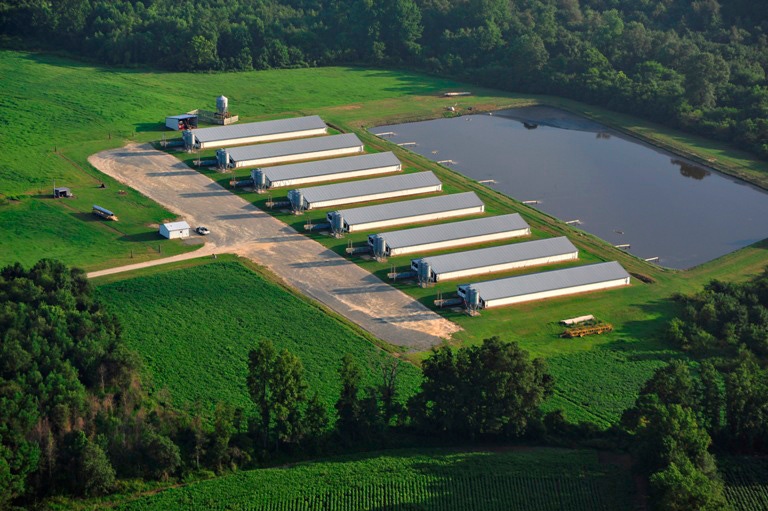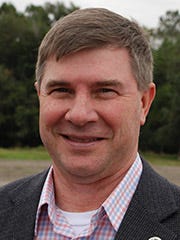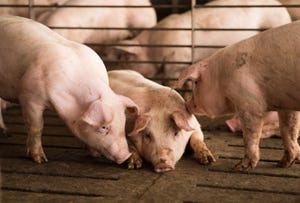NPB’s Even sees opportunity in pork industry
Pork Month 2016 comes as the U.S. swine industry is facing some financial challenges, but National Pork Board Chief Executive Officer, Bill Even, says the industry also has some opportunities for success.

National Pork Board Chief Executive Officer Bill Even was just one of the many dignitaries on hand as South Dakota State University christened its $7.4 million Swine Education and Research Facility north of Brookings Oct. 1, to kick off National Pork Month.

Before joining the NPB on June 6, 2016, Even led DuPont Pioneer’s global industry relations team and a North America Commercial Business Unit. From 2007-10, immediately prior to joining DuPont Pioneer, Even served as South Dakota’s Secretary of Agriculture.<br>He and his family own and operate a fifth-generation diversified crop and livestock operation near Humboldt, S.D., where they raise corn, soybeans, wheat, alfalfa and cattle. The farm was homesteaded in 1883 by his great-grandfather, and Even began farming in 1983. He and his wife, Janell, have three children.
After the SDSU swine unit dedication ceremony, Even talked Pork Month, pork business and the swine industry.
National Hog Farmer: As we enter National Pork Month, what are your thoughts of the U.S. pork industry?
Bill Even: The U.S. pork industry is growing, which presents some challenges along with new opportunities. There will be volatility in the market as people and business realign, but it’s much better to be in an expanding industry than in one that’s contracting. Today, we are at South Dakota State University in Brookings celebrating the opening of new swine research and production facility, and it’s a great day to be in the pork industry.
NHF: What does this new swine facility at SDSU and others like it mean to the U.S. swine industry?
Even: This new facility serves three key purposes. First, the reinvestment in the South Dakota State University’s pork production facilities will help educate students, which is critically important in a growing industry. We need a workforce trained in up-to-date facilities using today’s production techniques. Second, research that will be conducted in these facilities will play a crucial role helping the pork industry grow even more going forward.
And third, the facilities allow consumers to view pigs being raised — while maintaining the farm’s biosecurity — to help demystify pork production. SDSU designed this facility to reach beyond the students and the people raising the pigs, by opening its doors to the public. Many issues the pork industry faces such as siting, the environment or animal welfare, can be managed better simply by educating consumers by letting them see firsthand the good care America’s farmers take in raising pigs.
NHF: Recent falling hog prices present challenges to producers, but fortunately the price of feed commodities have also fallen. How do you see this scenario playing out for the industry?
Even: The ag industry is cyclical. Our family’s fifth-generation crop and livestock farm here in South Dakota deals with the same price and production cycles as everyone else. So, with expected record pork supplies, the Pork Checkoff is initiating an integrated marketing campaign to help boost sales. Stepping up marketing efforts will help retailers feature pork and ultimately help producers as we move through the large pork supplies.
To enhance those efforts, we recently restructured our domestic marketing department to get a fresh, aggressive focus on both domestic and international pork marketing. It’s our job to open doors and create opportunities. We also continue to expand U.S. pork exports, with people around the world enjoying and experiencing U.S. pork. For January through June, U.S. exports accounted for 25% of U.S. pork and pork variety meat exports, accounting for $48.34 per head.
NHF: What is your Pork Month message?
Even: October Pork Month provides the opportunity to celebrate pork and the nation’s pork producers while helping consumers make the farm-to-fork connection. We want to remind consumers that the nation’s pig farmers are committed to following the We Care ethical principles in their barns and to producing safe, high-quality pork. With the large pork supplies, we also want consumers to know that pork is a good value in the meat case, making it a good choice, both for holiday meals and everyday.
Recently, we worked with retailers on expanding ham purchases outside of the Thanksgiving and Christmas holidays by promoting it as an everyday meal. We were just in Dallas, Texas, this week to meet with major national grocery retailers to discuss the great marketing opportunities for pork. With the large pork supplies, the good news for retailers and pork producers alike is that consumer pork demand has remained strong.
NHF: America’s Pig Farmer of the year will be named next week. What does that person, that position, mean to the U.S. pork industry and the American consumer?
Even: While consumers trust pig farmers, they increasingly are asking how their food is raised. This annual award helps put a face on pig farming, which is important with most consumers two or more generations removed from the farm. The winner is dedicated to doing what’s right for people, pigs and the planet on his or her farm and is passionate about sharing that message. The award allows us to celebrate the great care and integrity that the winner and the nation’s other pork producers take in caring for their animals and their communities.
Showcasing that individual and his or her family for a year helps share pork’s story and connect with our customers. We encourage all producers to join the conversation with consumers. Producers can speak up for pork as Operation Main Street speakers, through social media using #RealPigFarming or by becoming the next America’s Pig Farmer of the Year. It’s important for pig farmers to be transparent, sharing what they do and why on their farms in order to continue to build trust with consumers.
About the Author(s)
You May Also Like



